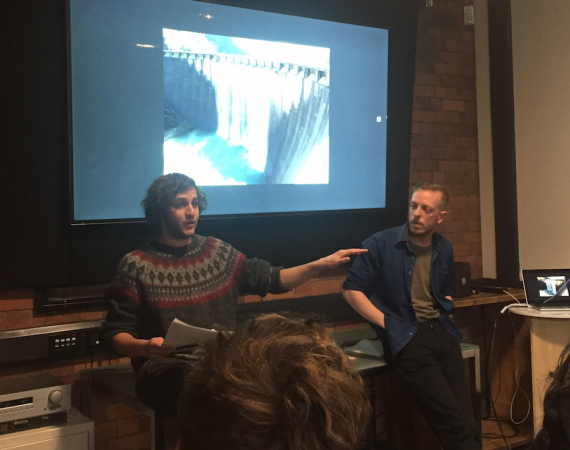Lunchtime talk write-up
Posted on Fri 6 Jan 2017
Sinfonidría - Making a giant musical instrument
In this inspiring Lunchtime Talk, we were joined by artists Yas Clarke and Lorenzo Prati who have spent months refining their generative musical system that uses data to compose music.

As a local to Emilia Romagna, Italy, and immersed in the works of generative musical legends such as Brian Eno and John Luther Adams, musician Lorenzo Prati was inspired to create a system to compose music from the beautiful Ridracoli dam in his local National Park. He approached Yas Clarke, a musician with a primary skill in computers, who was able to transform the vision into a reality. As a musician of analogue instruments, for the first time, Lorenzo had to permit a machine to compose on his behalf. The sound installation works in real time, generating music 24/7, 365 days a year. In this inspiring Lunchtime Talk, they guided us through some of both the tech and conceptual aspects of creating such a project, and I picked out five learnings from their talk:
- Dams collect data. From water temperature to level of the lake to tension, all these data sets are captured and logged. The result can give an indication of climate change. Lorenzo and Yas wanted to create a coherent representation of this shift in data via the medium of music, and so were granted access to a year’s worth of data, spanning 20 data streams of various paramaters being constantly collected.
- Data visualisation of this kind requires creative intervention to add artistic integrity. Using raw unmediated data would be honest but wouldn’t be coherent to the average human ear. They opted instead to use preconceptions of sounds and activity to group or adjust the data and programmed settings.
- Max MSP is a piece of software that can be used to convert data streams into Ableton sequences. It can also be programmed to scale data sets to a usable range – to avoid too much incomprehensible fluctuation in the composition.
- The resulting composition sounds a lot like you might imagine it to! A kalimba sound preset was used to show the fluctuating parameters of the rainfall and water flow etc – a high pitched percussive ping that might remind you of rain drops.
- This method of reappropriating data in a creatively digestible way could be applied to just about anything – from Google searches to medical records to MetOffice data.
The public broadcast is not yet available, but to experience a taste of the sounds of the dam, you can listen to a sample here.